Opinion & Analysis
The Most Overlooked Parameter in Iron Fitting

In the chart below, you can see the average results for an iron fitting I did with one of my members at Biltmore Forest CC recently. Based on these three data points presented, which iron would you choose? Most golfers go with club No. 2. The club head speed is faster, the carry is the longest, and the dispersion is the second best. It’s a no-brainer, right? If you think this is a trick, you’re on the right track, and I’ll get back to that later.
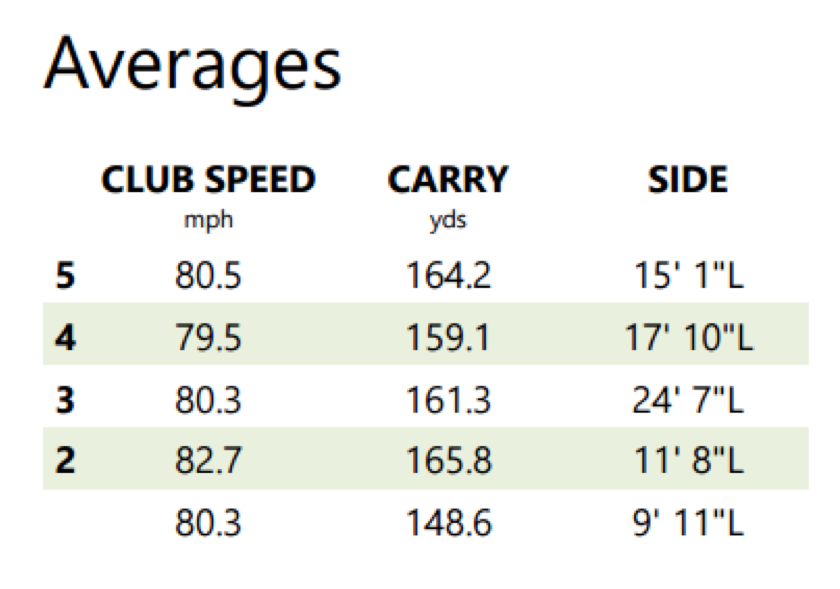
Club fitting has become a very important of golf. Most golfers today are fitted in some way before they purchase clubs, but that hasn’t always been the case. Before club fitters could accurately measure ball flight and club delivery with launch monitors, they relied on static fittings that accounted for length, loft, and lie adjustments at setup. With the introduction of a lie board, they were then able to tell how the club was positioned through the impact zone. As a result, fittings became more based on impact and ball flight results. Fast forward to the availability of launch monitors like TrackMan, and fitters can see exactly what the golf ball is doing and how the golf club communicates a message to the golf ball. All of these advancements have made the fitting process more transparent, as well as enhanced a fitter’s ability to fine tune the clubs of each and every golfer. The bad news is that they’ve also made a lot of golfers completely obsessed with distance.
When it comes to club fitting, the conversation often revolves around the driver. Driver fittings are fun for both the player and the teacher, because who doesn’t want to see longer, straighter drives? While I completely concede that driver fittings and distance are very important pieces to golf improvement, I also think their focus can dilute the fitting process for the 13 other clubs golfers use. With a driver, fitters are almost always trying to help golfers achieve a higher launch angle while reducing spin. It’s a formula that’s great for longer drives, but not always better iron shots. Too often, I see golfers worried most about distance when they’re trying different kinds irons at a demo day, which often leads them to choose the wrong clubs for their game.
Equipment manufacturers have played a role in the distance craze, of course, promoting the additional distance their clubs offer compared to the previous model or a competitor’s product… and they have a lot to brag about. Advancements in engineering have allowed golf equipment manufacturers to move weight lower in their iron heads, which helps golfers launch the ball higher. They’ve made their iron faces thinner and more flexible, which also makes shots go higher, and increased the amount of shaft options available, particularly their lightweight shaft options, to give the vast majority of golfers a chance to find a stock shaft that works for their swing.
As a result of these changes, today’s irons have lower different lofts than those produced not even 20 years ago, as well as slightly longer shaft lengths to help golfers take advantage of the latest technologies. Below are the published lofts and lengths from two leading iron manufacturers (I’ve labeled them Company A and Company B) for the same type of iron sets: one released in 2000, one released in 2017. As you can see, there’s been an incredible transformation in 17 years. It’s great for some golfers, but not for others, and I’ll explain why.
Company A
Company B
As you can see, the leading equipment manufacturers have reduced loft by 2-6 degrees with each iron, and they’ve added as much as 0.625 inches to the length of each iron as well. This will no doubt help golfers hit longer shots, but it can also have a negative effect on the control some golfers have over the golf ball when it lands on the green.
Control over the golf ball when it lands on the green is known as “stopping power,” and it’s is affected most by land angle (the angle at which the golf ball hits the ground). Land angle is highly correlated with how much the ball will bounce and roll once it has hit the ground, as each degree of reduced land angle is responsible for about 3 yards more of bounce and roll.
So what is a good land angle? For irons, I like to think about it this way. Anything coming into the ground at an angle more than 45 degrees is going more down than out when it lands; anything coming into the ground at an angle less than 45 degrees is traveling more out than down when it lands. That’s why the rule of thumb is that iron shots should have a land angle of at least 45 degrees.
There’s a caveat with this rule of thumb, however, and it’s that many golfers don’t have the swing speed to achieve a 45-degree land angle with all their irons. They need to be able to swing a 6 iron at about 85 mph to make it happen, and in the example below, the golfer I was fitting did not have that ability.
Fitting Example
Here is the same example from above — a golfer I fit hitting five different 6 irons — that now includes peak height and landing angle.
With the most important data added, there’s no question that this golfer needs to use iron No. 5. It flew almost as far and as straight as No. 2, but shots with No. 5 had a landing angle that was almost 3-degree higher, which means that shots will stop 6 yards sooner when they hit the green. That’s a big deal when hitting a shot to a protected front pin. Remember, the goal with irons is to hit shots as close to the pin as possible. Yes, within reason we want to hit the ball as high and as far as possible, but not at the expense of stopping power.
Just because a set of irons has strong lofts doesn’t mean it will be bad for you. Some golfers need a 49-degree pitching wedge to perform their best, while others can perform their best with a 42-degree pitching wedge. The only way for you to know for sure what you need is to have an iron fitting that includes a focus on land angle. If it’s optimized, you will be a much happier golfer when you get out on the course with your new set.
- LIKE549
- LEGIT74
- WOW30
- LOL12
- IDHT6
- FLOP9
- OB2
- SHANK46
Instruction
The Wedge Guy: The easiest-to-learn golf basic

My golf learning began with this simple fact – if you don’t have a fundamentally sound hold on the golf club, it is practically impossible for your body to execute a fundamentally sound golf swing. I’m still a big believer that the golf swing is much easier to execute if you begin with the proper hold on the club.
As you might imagine, I come into contact with hundreds of golfers of all skill levels. And it is very rare to see a good player with a bad hold on the golf club. There are some exceptions, for sure, but they are very few and very far between, and they typically have beat so many balls with their poor grip that they’ve found a way to work around it.
The reality of biophysics is that the body moves only in certain ways – and the particulars of the way you hold the golf club can totally prevent a sound swing motion that allows the club to release properly through the impact zone. The wonderful thing is that anyone can learn how to put a fundamentally sound hold on the golf club, and you can practice it anywhere your hands are not otherwise engaged, like watching TV or just sitting and relaxing.
Whether you prefer an overlap, interlock or full-finger (not baseball!) grip on the club, the same fundamentals apply. Here are the major grip faults I see most often, in the order of the frequency:
Mis-aligned hands
By this I mean that the palms of the two hands are not parallel to each other. Too many golfers have a weak left hand and strong right, or vice versa. The easiest way to learn how to hold the club with your palms aligned properly is to grip a plain wooden ruler or yardstick. It forces the hands to align properly and shows you how that feels. If you grip and re-grip a yardstick several times, then grip a club, you’ll see that the learning curve is almost immediate.
The position of the grip in the upper/left hand
I also observe many golfers who have the butt of the grip too far into the heel pad of the upper hand (the left hand for right-handed players). It’s amazing how much easier it is to release the club through the ball if even 1/4-1/2″ of the butt is beyond the left heel pad. Try this yourself to see what I mean. Swing the club freely with just your left hand and notice the difference in its release from when you hold it at the end of the grip, versus gripping down even a half inch.
To help you really understand how this works, go to the range and hit shots with your five-iron gripped down a full inch to make the club the same length as your seven-iron. You will probably see an amazing shot shape difference, and likely not see as much distance loss as you would expect.
Too much lower (right) hand on the club
It seems like almost all golfers of 8-10 handicap or higher have the club too far into the palm of the lower hand, because that feels “good” if you are trying to control the path of the clubhead to the ball. But the golf swing is not an effort to hit at the ball – it is a swing of the club. The proper hold on the club has the grip underneath the pad at the base of the fingers. This will likely feel “weak” to you — like you cannot control the club like that. EXACTLY. You should not be trying to control the club with your lower/master hand.
Gripping too tightly
Nearly all golfers hold the club too tightly, which tenses up the forearms and prevents a proper release of the club through impact. In order for the club to move back and through properly, you must feel that the club is controlled by the last three fingers of the upper hand, and the middle two fingers of the lower hand. If you engage your thumbs and forefingers in “holding” the club, the result will almost always be a grip that is too tight. Try this for yourself. Hold the club in your upper hand only, and squeeze firmly with just the last three fingers, with the forefinger and thumb off the club entirely. You have good control, but your forearms are not tense. Then begin to squeeze down with your thumb and forefinger and observe the tensing of the entire forearm. This is the way we are made, so the key to preventing tenseness in the arms is to hold the club very lightly with the “pinchers” — the thumbs and forefingers.
So, those are what I believe are the four fundamentals of a good grip. Anyone can learn them in their home or office very quickly. There is no easier way to improve your ball striking consistency and add distance than giving more attention to the way you hold the golf club.
More from the Wedge Guy
- The Wedge Guy: Golf mastery begins with your wedge game
- The Wedge Guy: Why golf is 20 times harder than brain surgery
- The Wedge Guy: Musings on the golf ball rollback
- LIKE64
- LEGIT10
- WOW3
- LOL1
- IDHT0
- FLOP3
- OB0
- SHANK4
19th Hole
Vincenzi’s 2024 Texas Children’s Houston Open betting preview

As the Florida swing comes to an end, the PGA Tour makes its way to Houston to play the Texas Children’s Houston Open at Memorial Park Golf Course.
This will be the fourth year that Memorial Park Golf Course will serve as the tournament host. The event did not take place in 2023, but the course hosted the event in 2020, 2021 and 2022.
Memorial Park is a par-70 layout measuring 7,432 yards and features Bermudagrass greens. Historically, the main defense for the course has been thick rough along the fairways and tightly mown runoff areas around the greens. Memorial Park has a unique setup that features three Par 5’s and five Par 3’s.
The field will consist of 132 players, with the top 65 and ties making the cut. There are some big names making the trip to Houston, including Scottie Scheffler, Wyndham Clark, Tony Finau, Will Zalatoris and Sahith Theegala.
Past Winners at Memorial Park
- 2022: Tony Finau (-16)
- 2021: Jason Kokrak (-10)
- 2020: Carlos Ortiz (-13)
In this article and going forward, I’ll be using the Rabbit Hole by Betsperts Golf data engine to develop my custom model. If you want to build your own model or check out all of the detailed stats, you can sign up using promo code: MATTVIN for 25% off any subscription package (yearly is best value).
Key Stats For Memorial Park
Let’s take a look at several metrics for Memorial Park to determine which golfers boast top marks in each category over their last 24 rounds:
Strokes Gained: Approach
Memorial Park is a pretty tough golf course. Golfers are penalized for missing greens and face some difficult up and downs to save par. Approach will be key.
Total Strokes Gained: Approach per round in past 24 rounds:
- Tom Hoge (+1.30)
- Scottie Scheffler (+1.26)
- Keith Mitchell (+0.97)
- Tony Finau (+0.92)
- Jake Knapp (+0.84)
Strokes Gained: Off the Tee
Memorial Park is a long golf course with rough that can be penal. Therefore, a combination of distance and accuracy is the best metric.
Total Strokes Gained: Off the Tee per round in past 24 rounds:
- Scottie Scheffler (+0.94)
- Kevin Dougherty (+0.93)
- Cameron Champ (+0.86)
- Rafael Campos (+0.84)
- Si Woo Kim (+0.70)
Strokes Gained Putting: Bermudagrass + Fast
The Bermudagrass greens played fairly fast the past few years in Houston. Jason Kokrak gained 8.7 strokes putting on his way to victory in 2021 and Tony Finau gained in 7.8 in 2022.
Total Strokes Gained Putting (Bermudagrass) per round past 24 rounds (min. 8 rounds):
- Adam Svensson (+1.27)
- Harry Hall (+1.01)
- Martin Trainer (+0.94)
- Taylor Montgomery (+0.88)
- S.H. Kim (+0.86)
Strokes Gained: Around the Green
With firm and undulating putting surfaces, holding the green on approach shots may prove to be a challenge. Memorial Park has many tightly mowed runoff areas, so golfers will have challenging up-and-down’s around the greens. Carlos Ortiz gained 5.7 strokes around the green on the way to victory in 2020.
Total Strokes Gained: Around the Green per round in past 24 rounds:
- Mackenzie Hughes (+0.76)
- S.H. Kim (+0.68)
- Scottie Scheffler (+0.64)
- Jorge Campillo (+0.62)
- Jason Day (+0.60)
Strokes Gained: Long and Difficult
Memorial Park is a long and difficult golf course. This statistic will incorporate players who’ve had success on these types of tracks in the past.
Total Strokes Gained: Long and Difficult in past 24 rounds:
- Scottie Scheffler (+2.45)
- Ben Griffin (+1.75)
- Will Zalatoris (+1.73)
- Ben Taylor (+1.53)
- Tony Finau (+1.42)
Course History
Here are the players who have performed the most consistently at Memorial Park.
Strokes Gained Total at Memorial Park past 12 rounds:
- Tyson Alexander (+3.65)
- Ben Taylor (+3.40)
- Tony Finau (+2.37)
- Joel Dahmen (+2.25)
- Patton Kizzire (+2.16)
Statistical Model
Below, I’ve reported overall model rankings using a combination of the five key statistical categories previously discussed.
These rankings are comprised of SG: App (24%) SG: OTT (24%); SG: Putting Bermudagrass/Fast (13%); SG: Long and Difficult (13%); SG: ARG (13%) and Course History (13%)
- Scottie Scheffler
- Wyndham Clark
- Tony Finau
- Joel Dahmen
- Stephan Jaeger
- Aaron Rai
- Sahith Theegala
- Keith Mitchell
- Jhonnatan Vegas
- Jason Day
- Kurt Kitayama
- Alex Noren
- Will Zalatoris
- Si Woo Kim
- Adam Long
2024 Texas Children’s Houston Open Picks
Will Zalatoris +2000 (Caesars)
Scottie Scheffler will undoubtedly be difficult to beat this week, so I’m starting my card with someone who I believe has the talent to beat him if he doesn’t have his best stuff.
Will Zalatoris missed the cut at the PLAYERS, but still managed to gain strokes on approach while doing so. In an unpredictable event with extreme variance, I don’t believe it would be wise to discount Zalatoris based on that performance. Prior to The PLAYERS, the 27-year-old finished T13, T2 and T4 in his previous three starts.
Zalatoris plays his best golf on long and difficult golf courses. In his past 24 rounds, he ranks 3rd in the category, but the eye test also tells a similar story. He’s contended at major championships and elevated events in the best of fields with tough scoring conditions. The Texas resident should be a perfect fit at Memorial Park Golf Club.
Alex Noren +4500 (FanDuel)
Alex Noren has been quietly playing some of his best golf of the last half decade this season. The 41-year-old is coming off back-to-back top-20 finishes in Florida including a T9 at The PLAYERS in his most recent start.
In his past 24 rounds, Noren ranks 21st in the field in Strokes Gained: Off the Tee, 30th in Strokes Gained: Around the Green, 25th in Strokes Gained: Total on long and difficult courses and 21st in Strokes Gained: Putting on fast Bermudagrass greens.
In addition to his strong recent play, the Swede also has played well at Memorial Park. In 2022, Noren finished T4 at the event, gaining 2.2 strokes off the tee and 7.0 strokes on approach for the week. In his two starts at the course, he’s gained an average of .6 strokes per round on the field, indicating he is comfortable on these greens.
Noren has been due for a win for what feels like an eternity, but Memorial Park may be the course that suits him well enough for him to finally get his elusive first PGA Tour victory.
Mackenzie Hughes +8000 (FanDuel)
Mackenzie Hughes found himself deep into contention at last week’s Valspar Championship before faltering late and finishing in a tie for 3rd place. While he would have loved to win the event, it’s hard to see the performance as anything other than an overwhelming positive sign for the Canadian.
Hughes has played great golf at Memorial Park in the past. He finished T7 in 2020, T29 in 2021 and T16 in 2022. The course fit seems to be quite strong for Hughes. He’s added distance off the tee in the past year or and ranks 8th in the field for apex height, which will be a key factor when hitting into Memorial Park’s elevated greens with steep run-off areas.
In his past 24 rounds, Hughes is the best player in the field in Strokes Gained: Around the Greens. The ability to scramble at this course will be extremely important. I believe Hughes can build off of his strong finish last week and contend once again to cement himself as a President’s Cup consideration.
Akshay Bhatia +8000 (FanDuel)
Akshay Bhatia played well last week at the Valspar and seemed to be in total control of his golf ball. He finished in a tie for 17th and shot an impressive -3 on a difficult Sunday. After struggling Thursday, Akshay shot 68-70-68 in his next three rounds.
Thus far, Bhatia has played better at easier courses, but his success at Copperhead may be due to his game maturing. The 22-year-old has enormous potential and the raw talent to be one of the best players in the world when he figures it all out.
Bhatia is a high upside play with superstar qualities and may just take the leap forward to the next stage of his career in the coming months.
Cameron Champ +12000 (FanDuel)
Cameron Champ is a player I often target in the outright betting market due to his “boom-or-bust” nature. It’s hard to think of a player in recent history with three PGA Tour wins who’s been as inconsistent as Champ has over the course of his career.
Despite the erratic play, Cam Champ simply knows how to win. He’s won in 2018, 2019 and 2021, so I feel he’s due for a win at some point this season. The former Texas A&M product should be comfortable in Texas and last week he showed us that his game is in a pretty decent spot.
Over his past 24 rounds, Champ ranks 3rd in Strokes Gained: Off the Tee and 30th in Strokes Gained: Total on long and difficult courses. Given his ability to spike at any given time, Memorial Park is a good golf course to target Champ on at triple digit odds.
Robert MacIntyre +12000 (FanDuel)
The challenge this week is finding players who can possibly beat Scottie Scheffler while also not dumping an enormous amount of money into an event that has a player at the top that looks extremely dangerous. Enter McIntyre, who’s another boom-or-bust type player who has the ceiling to compete with anyone when his game is clicking on all cylinders.
In his past 24 rounds, MacIntyre ranks 16th in the field in Strokes Gained: Off the Tee, 17th in Strokes Gained: Around the Green and 10th in Strokes Gained: Total on long and difficult courses.
MacIntyre’s PGA Tour season has gotten off to a slow start, but he finished T6 in Mexico, which is a course where players will hit driver on the majority of their tee shots, which is what we will see at Memorial Park. Texas can also get quite windy, which should suit MacIntyre. Last July, the Scot went toe to toe with Rory McIlroy at the Scottish Open before a narrow defeat. It would take a similar heroic effort to compete with Scheffler this year in Houston.
Ryan Moore +15000 (FanDuel)
Ryan Moore’s iron play has been absolutely unconscious over his past few starts. At The PLAYERS Championship in a loaded field, he gained 6.1 strokes on approach and last week at Copperhead, he gained 9.0 strokes on approach.
It’s been a rough handful of years on Tour for the 41-year-old, but he is still a five-time winner on the PGA Tour who’s young enough for a career resurgence. Moore has chronic deterioration in a costovertebral joint that connects the rib to the spine, but has been getting more consistent of late, which is hopefully a sign that he is getting healthy.
Veterans have been contending in 2024 and I believe taking a flier on a proven Tour play who’s shown signs of life is a wise move at Memorial Park.
- LIKE13
- LEGIT1
- WOW1
- LOL0
- IDHT0
- FLOP0
- OB0
- SHANK2
Opinion & Analysis
Ryan: Why the race to get better at golf might be doing more harm than good

B.F. Skinner was one of the most important psychologists of the 20th century, developing the foundation of the development of reinforcement, and in doing so, creating the concept of behaviorism. In simple terms, this means that we are conditioned by our habits. In practical terms, it explains the divide between the few and far between elite instructors and college coaches.
To understand the application, let’s quickly review one of B.F. Skinner’s most important experiments; superstitions in the formation of behavior by pigeons. In this experiment, food was dispensed to pigeons at random intervals. Soon, according to Skinner, the pigeons began to associate whatever action they were doing at the time of the food being dispensed. According to Skinner, this conditioned that response and soon, they simply haphazardly repeated the action, failing to distinguish between cause and correlation (and in the meantime, looking really funny!).
Now, this is simply the best way to describe the actions of most every women’s college golf coach and too many instructors in America. They see something work, get positive feedback and then become conditioned to give the feedback, more and more, regardless of if it works (this is also why tips from your buddies never work!).
Go to a college event, particularly a women’s one, and you will see coaches running all over the place. Like the pigeons in the experiment, they have been conditioned into a codependent relationship with their players in which they believe their words and actions, can transform a round of golf. It is simply hilarious while being equally perturbing
In junior golf, it’s everywhere. Junior golf academies make a living selling parents that a hysterical coach and over-coaching are essential ingredients in your child’s success.
Let’s be clear, no one of any intellect has any real interest in golf — because it’s not that interesting. The people left, including most coaches and instructors, carve out a small fiefdom, usually on the corner of the range, where they use the illusion of competency to pray on people. In simple terms, they baffle people with the bullshit of pseudo-science that they can make you better, after just one more lesson.
The reality is that life is an impromptu game. The world of golf, business, and school have a message that the goal is being right. This, of course, is bad advice, being right in your own mind is easy, trying to push your ideas on others is hard. As a result, it is not surprising that the divorce rate among golf professionals and their instructors is 100 percent. The transfer rate among college players continues to soar, and too many courses have a guy peddling nefarious science to good people. In fact, we do at my course!
The question is, what impact does all this have on college-age and younger kids? At this point, we honestly don’t know. However, I am going to go out on a limb and say it isn’t good.
Soren Kierkegaard once quipped “I saw it for what it is, and I laughed.” The actions of most coaches and instructors in America are laughable. The problem is that I am not laughing because they are doing damage to kids, as well as driving good people away from this game.
The fact is that golfers don’t need more tips, secrets, or lessons. They need to be presented with a better understanding of the key elements of golf. With this understanding, they can then start to frame which information makes sense and what doesn’t. This will emancipate them and allow them to take charge of their own development.
- LIKE14
- LEGIT4
- WOW1
- LOL2
- IDHT0
- FLOP1
- OB0
- SHANK11
-

 19th Hole6 days ago
19th Hole6 days agoJohn Daly stuns fans into silence with brutal opening tee shot on PGA Tour Champions
-

 19th Hole1 week ago
19th Hole1 week ago2-time major champ announces shock retirement from the sport at age of 33
-

 19th Hole6 days ago
19th Hole6 days agoCharlie Woods finds it tough going on American Junior Golf Association debut
-

 19th Hole1 week ago
19th Hole1 week agoEdoardo Molinari reveals the latest PGA Tour golfer to turn down ‘good offer’ from LIV Golf
-

 Equipment3 weeks ago
Equipment3 weeks agoBest driver 2024: The best driver for you, as recommend by expert club fitters
-

 19th Hole2 weeks ago
19th Hole2 weeks agoScottie Scheffler had an interesting response when asked how he ‘quiets the noise’ following Players victory
-

 19th Hole2 weeks ago
19th Hole2 weeks agoJon Rahm dealt fresh blow to hopes of qualifying for 2025 Ryder Cup
-
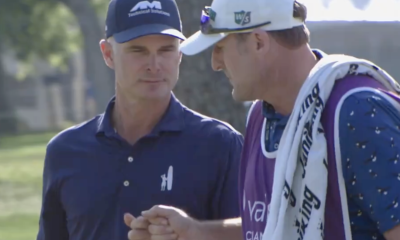
 19th Hole1 week ago
19th Hole1 week agoWhy Kevin Streelman sought USGA approval to use this equipment tool as he leads Valspar after round one

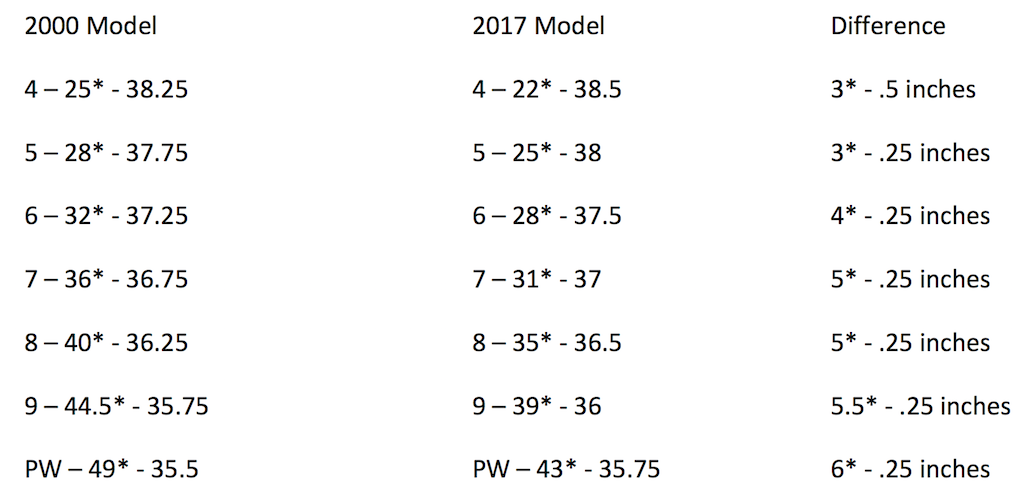
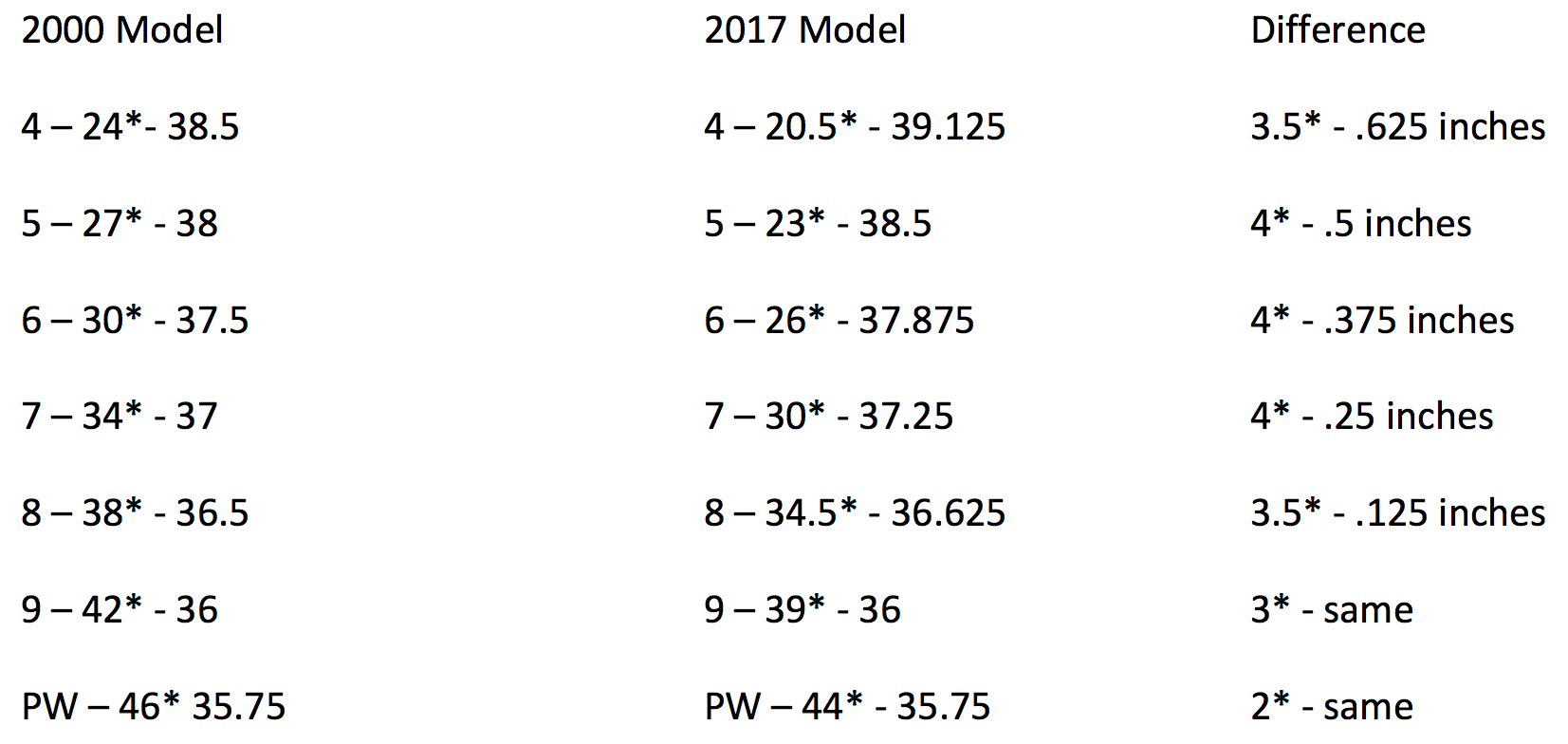
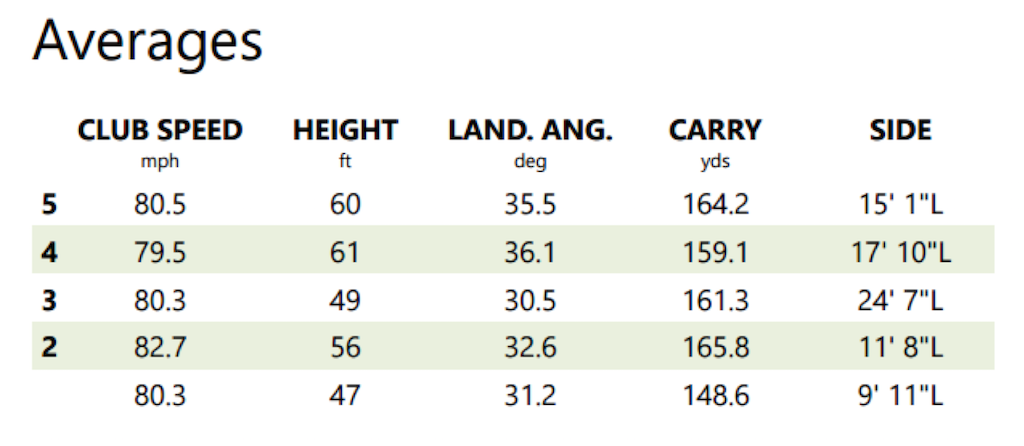












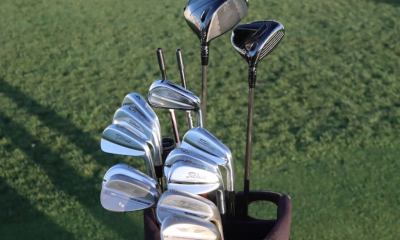

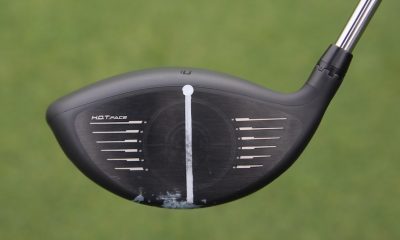

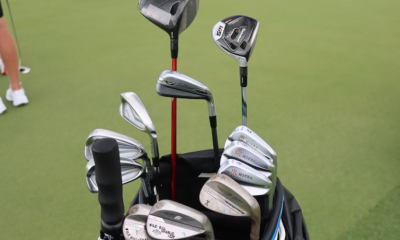

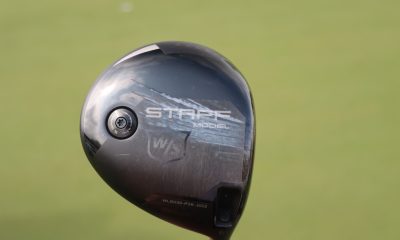

Speedy
Jul 3, 2017 at 4:50 pm
Shaft lengthening has done the most harm. Rather than pay for expensive custom ordering/fitting, make sure you choke down on each shot. Instill this in practice sessions.
Lloyd Jackson
Jul 3, 2017 at 1:25 am
Company A 2000 model: Those specs would have been rather unusual even then. More likely the specs of a blade from the 1980s.
As my very good friend, Jay Turner of RedBird/Avian Golf would say: With irons, it’s not HOW FAR, it’s HOW CLOSE.
The number on the sole has little meaning and the deceptive loft jacking and shaft lengthening began with Callaway’s S2H2 irons.
Hunter Brown
Jul 5, 2017 at 7:31 am
Hey Lloyd thanks for your response and interest. One set was a game improvement iron and the other was a more typical cavity back mid to low hdcp option
Dill Pickelson
Jul 2, 2017 at 11:52 pm
hi, can i ask why you extend your clubs? i’m tall too and used to have 1″ longer but every club is a different length anyway! i went back to ‘standard’ length and no issues. so, why bother changing shaft length?
TONEY P
Jul 3, 2017 at 7:43 pm
What did you do for the swing weight of each club extended. They had to feel heavier?
TONEY P
Jul 3, 2017 at 7:53 pm
Most golfers don’t have a clue what they’re doing or really need when buying clubs. If you can’t PUNCH your iron 3/4 it’s distance straight then the iron lie needs to be adjusted.. Good golfers know what to do so the other 97 % need to ask them .
Joshua Chervokas
Jul 2, 2017 at 6:56 pm
This is never overlooked by actual fitters. The problem is that what they do at big box stores is not a fitting regardless of what they call it. Go to any Golf Digest top 100 fitter like myself and an iron fitting will focus highly on landing angle and we will weaken and strengthen lofts all the time.
QV
Jul 2, 2017 at 10:44 am
You must be very lonely.
Jeff
Jul 1, 2017 at 10:36 am
I certainly agree with the article. Too much hubris in the world today to go back to higher lofts in irons. If your buddy hits a 7 iron and you need to hit a 6, well that’s just emasculating now isn’t it? I originally thought though the article was going to be about lie angles being too upright and not enough emphasis placed on that since you included the left stat. I see so many people I play with that have that issue and then wonder why they pull their shots so often.
CTGolfer
Jul 1, 2017 at 6:08 am
Why is Peak Height and Land angle not part of the “optimizer” in Trackman. What in the Optimizer correlates with peak height and land angle?
Me
Jul 1, 2017 at 6:55 am
When I do my club fitting clients, my trackman 4 has Height and landing angle in my front (top) page of my tiles used.
Recently I fitted one of the younger assistant pros at an exclusive club
When comparing recently the Titliest AP2 vs the Taylormade 770, both quality clubs. Both share the same lofts 33deg. It was clear visually even without the trackman the 770 went higher.
with the track man the 770 peaked higher by 12 feet, went more than 10 yards further (177) a much steeper landing angle. But here is where it got interesting, the 770 consistently was 4700-5500 spin. The ap2 was 6000-7500 spin. Both clubs had the KBS tour FLT 120 g shaft.
There was no question what the right club was based on peak, spin….the added distance was just a bonus.
Hunter Brown
Jul 1, 2017 at 9:08 am
Launch, Spin, and height are all included in the Optimizer. This determines land angle so although it is not expressly in the optimizer it will be a result of what is in the optimizer. You can also look at the ‘side/top’ view to see the trajectory window and optimized shot should travel vs what the trajectory it actually took
Adam
Jun 30, 2017 at 9:28 pm
Gofwrx’ers I agree, BUT we should thankful for all the marketing. 98% of golfers are awful, but love to play and love to hit all their clubs as far as possible. More marketing= more bad golfers spending more on gear and more money at the course, which keeps more golf courses open, more staff employed and better conditions for me. We need more people attracted to the game these days more than ever.
Now I have played the same specs as my original titleist 680’s my entire golf career and have known my exact lofts and lie’s and think its more fun hitting high cut 2,3 irons than jacked 4,5 irons any day. So I think it’s funny…
Thus
Jun 30, 2017 at 3:42 pm
The ball can have a huge affect on Landing angle and peak hieght some times more then the iron, dispersion is what I fit for the most, more front to back, then side to side, then height and spin..
One of the biggest myths is flex, difference between flexes is minimal.
Myron miller
Jun 30, 2017 at 3:19 pm
But almost, if not maybe more important is backspin on the iron. wHen I got fitted for my current iroons, The choice was between two different styles. Both had land angles less than 45 degrees, but the second one had over 3000 rpm more backspin even though its land angle was almost 4 degrees less. I just flat out spun that club way more. And having more backspin sometimes if more important in stopping the ball on the green than the landing angle.
I can’t count the number of times I’ve seen players use a club and chip it about 40 yards onto the green with a land angle of less than 25 degrees but with a ton of backspin and the ball literally bounces once and backs up 2-5 feet. One can play that particular pitch two ways, with a very low landing angle but a ton of spin or a very high land angle and minimal spin. If there is a bunch of wind, then the lower angle is definitely the better shot. Same applies to longer approach shots. With windy conditions, higher land angles will hurt you more times than not.
Land angle certain is important, but spin is easily as important and sometimes even more.
Hunter Brown
Jun 30, 2017 at 3:40 pm
This situation you describe is hard to fathom. 3000 more rpm of spin and 4 degrees less of land angle is almost impossible to happen on a full shot land angle is directly effected by spin. More spin higher=higher land angle
TR1PTIK
Jul 3, 2017 at 10:59 am
Gotta agree with Hunter on this on too. Also, the situations you describe are caused by the actions of the player, not the performance of the club. You can take pretty much any iron or wedge and the two shots you described. To see that much variation in spin on full shots is unlikely unless you’re looking at SGI vs. Player’s clubs.
Well now...
Jun 30, 2017 at 1:07 pm
Kind of the argument the latest try of Hogan irons when loft comes into the argument. The number on the club is all relative and a point of reference in the end – you can call a club with a loft of 25* anything you want, in the end it’s still 25*.
Iutodd
Jun 30, 2017 at 11:32 am
Good article.
I’m hoping to get fit next year for irons – this article is getting saved for the experience. Never thought about landing angle before.
Iutodd
Jun 30, 2017 at 11:44 am
Oh and I’m gaming MX-17s so my lofts are a lot closer to the “2000” lofts. I’m not sure how I’m gonna get a similar style – which is more “game improvement” but get lofts that work for me. The Z545s look similar to my clubs but the lofts are pretty different. I guess I’ll have to see if I’m good enough for the 745s which are much closer to my current lofts.
TR1PTIK
Jun 30, 2017 at 10:08 am
I had a pretty good idea this article would lead to peak height and landing angle. Following closely behind those two metrics IMO would be spin; dispersion next, and then carry distance when trying to fit a set of irons or wedges. For anyone who has yet to see them, these Trackman averages from 2014 should give some good insight about what the irons should be doing… https://blog.trackmangolf.com/trackman-average-tour-stats/
Hunter Brown
Jun 30, 2017 at 11:35 am
Good stuff here and you are exactly right. I will say that unfortunately not everyone can achieve “Tour Averages” because of the lack of speed. It is definitely better for most to look at the LPGA Average stats but understand that averages are exactly that and suitable for everyone
TR1PTIK
Jun 30, 2017 at 1:27 pm
I agree. In terms of landing angle though, either data set will apply.
SoonerSlim
Jun 30, 2017 at 10:05 am
One thing I don’t understand whenever WRX presents these examples is they always use a golfer with much, much more swing speed than the average golfer. How many average golfers have a 6-iron swing speed of 80 mph?? In the mid to high 60s is more accurate!
Hunter Brown
Jun 30, 2017 at 11:32 am
this particular gentleman was pretty average. He is in his mid 50s and about a 12 hdcp. His swing speed is maybe a little on the high end for his demographic but not by much
Grizz01
Jun 30, 2017 at 12:46 pm
I’m 54 and I still play my 1994 Lynx Parrallax irons. I don’t have a clue what my swing speed is but I still hit my 6 iron (normal conditions) 180-185yds. I don’t know what loft it is … but I do know that the PW is 50 degrees straight out of the box.
xjohnx
Jun 30, 2017 at 9:59 am
I really wish the masses would start incorporating more logic such as this to golf marketing. It’s unfortunate that there is only one rule that trumps all else. Seemingly by no coincidence it was most famously said to me once by a regional TM rep, “distance sells golf clubs”.
I can’t imagine anyone with any common sense arguing the message behind this article. The ability to hit your shots closer to the hole is always going to potentially lower your scored more than a few extra yards. I almost feel bad for people who get so caught up in hitting their irons longer. Whether you have 7 irons and 3 wedges, or 6 irons and 4 wedges that all go the same distances, does it matter what number is stamped on the sole?
Chris B
Jun 30, 2017 at 9:14 am
I would still go for iron 2, make them 1 degree weak if need be based on this. There is more to choosing the right set of irons than this data.
It is a shame that what Hogan did dint take off, putting the loft on the club rather than a number. I was looking at a thread the other day on 3 irons, one person commented on how they had made their 4 iron 1 degree strong – to 18 degrees!
Hunter Brown
Jun 30, 2017 at 11:39 am
Chris – you bring up some good points however EQM’s don’t just lower the loft and call it a day they know the irons would not perform if that was the case. Sometimes they account for the lower loft by lowering the cg, lighter shafts, etc. to launch the ball higher. Just because the loft of one club to the next may be different doesn’t necessarily make it a bad thing. I am glad you are thinking the right way though!
Daryl
Jun 30, 2017 at 9:09 am
Out of curiosity, would the 45 degree rule hold for the longer irons?
TR1PTIK
Jun 30, 2017 at 10:10 am
Yes. Follow the link in my other comment to view Trackman data. It is older, but plenty relevant for holding greens.
Hunter Brown
Jun 30, 2017 at 11:37 am
Daryl – good question. If possible yes this would hold true but most people do not have the swing speed in order to accomplish this. Also course conditions and where someone plays needs to be considered.
Jack Nash
Jun 30, 2017 at 8:21 am
Marketing indeed has taken over with the help of Media. GC is always touting how far X Golfer hits his driver. There’s part of the problem.
Scott
Jun 30, 2017 at 9:01 am
I agree Jack. No one should be able to hit 180 yard Wedges and 9 irons. A little truth in advertising would be nice. A 42 degree Pitching Wedge? That is between my 8 and 9 iron.
Lee Shaw
Jun 30, 2017 at 10:43 am
42 deg was my 8 iron in 1974, I hit it pretty good too, but saying that my 9 is now 40 deg and I’m not to shabby with that either.
Grizz01
Jun 30, 2017 at 12:50 pm
I still play with my 1993 Lynx Parrallax irons. I know the PW is 50 degrees. And I remember back then I thought wow! Technology has come along way. My previous clubs from the late 70’s were Wilson 1200’s. And I was suddenly using 1 -2 clubs less with the Lynx.
Turns out not much technology as much as just renaming an old 5 iron a 6 or 7 iron.
Jeremy Thompson
Jul 1, 2017 at 4:17 am
which opens up a market for gap wedges…….when the separation between PW and SW becomes exaggerated.